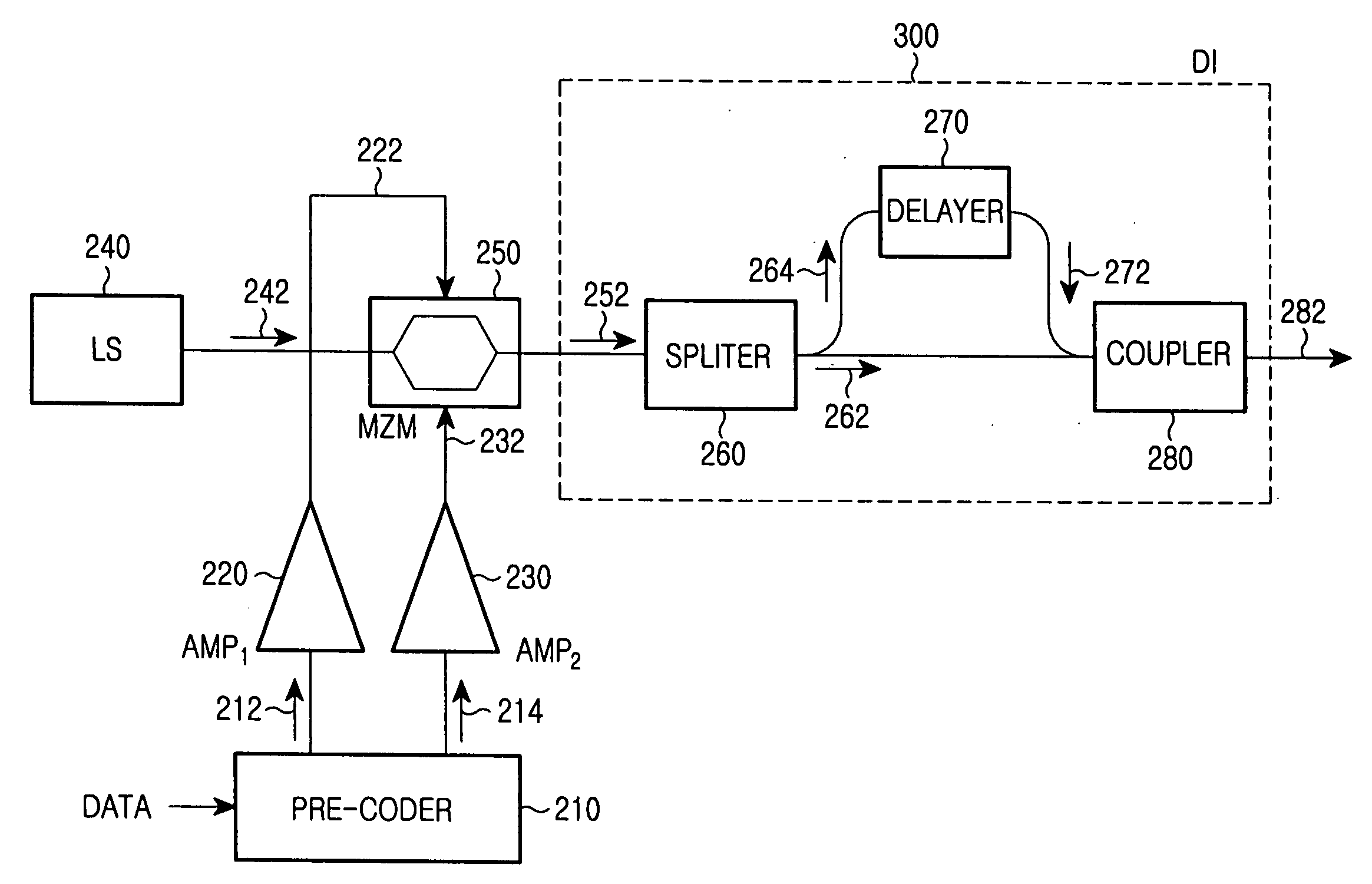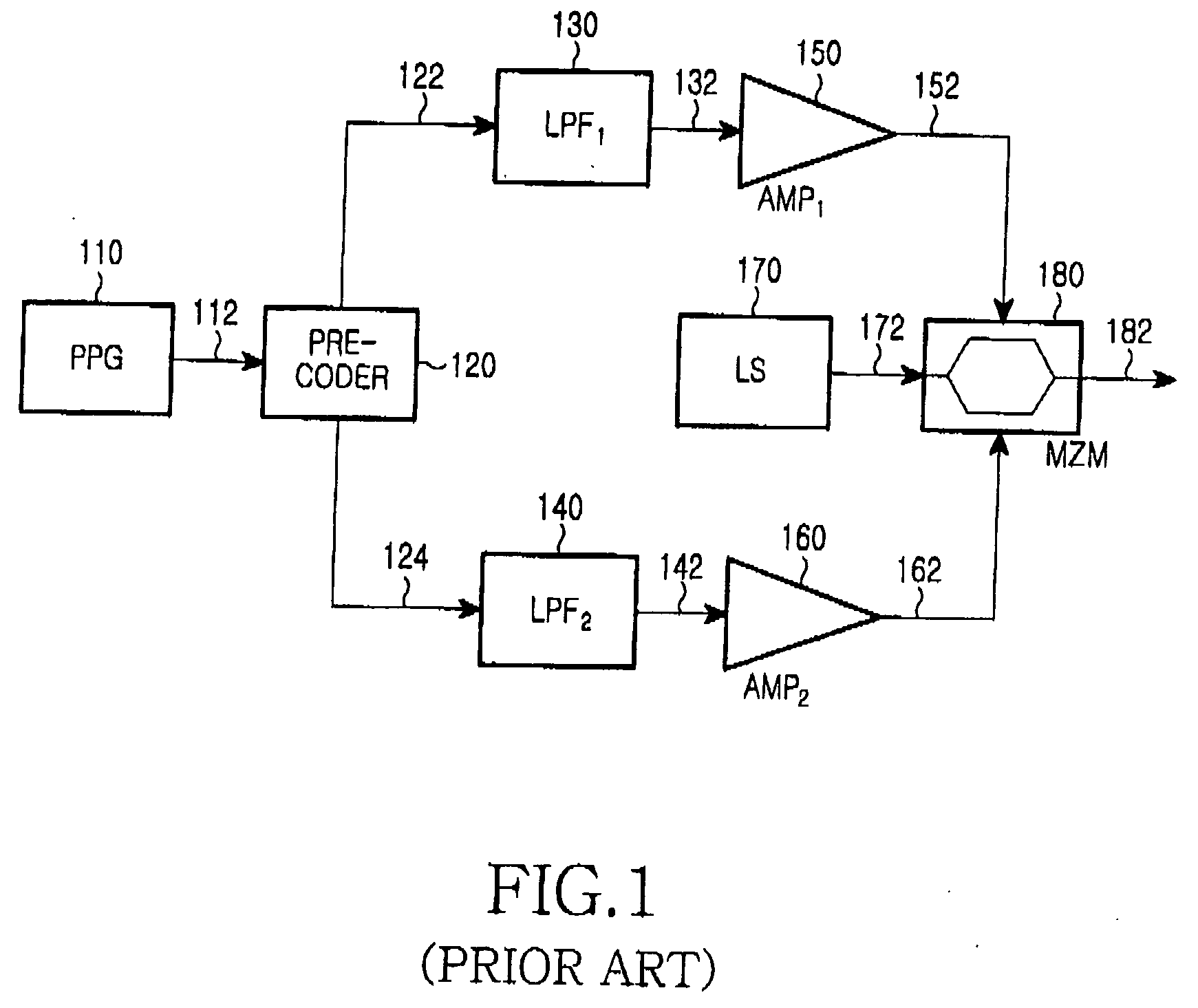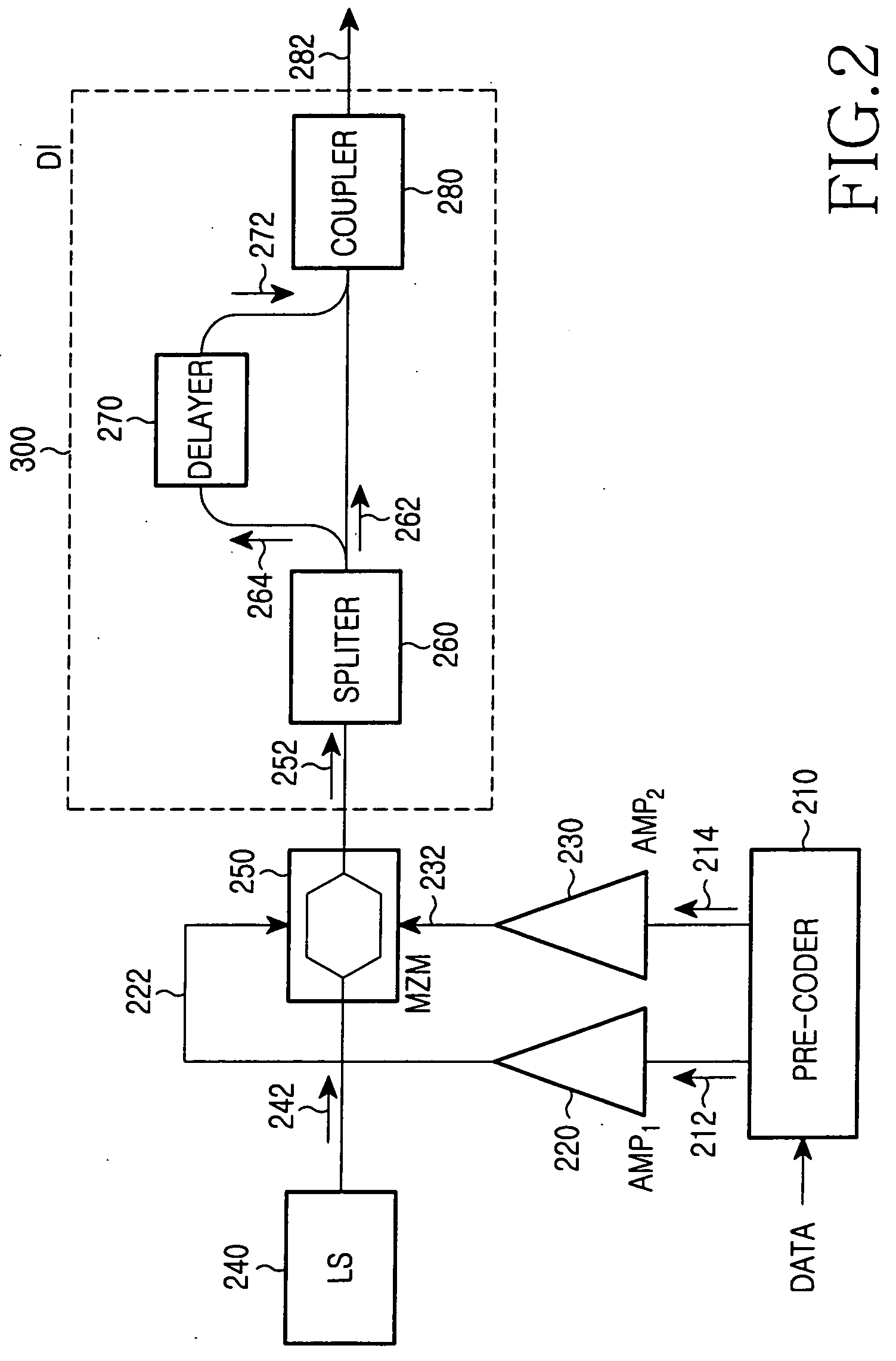Duo-binary optical transmitter tolerant to chromatic dispersion
a dual-binary, optical transmitter technology, applied in the field of optical transmitters, can solve the problem of chromatic dispersion of optical fibers that are much less tolerant of methods
- Summary
- Abstract
- Description
- Claims
- Application Information
AI Technical Summary
Benefits of technology
Problems solved by technology
Method used
Image
Examples
Embodiment Construction
[0021] Hereinafter, embodiments according to the present invention will be described with reference to the accompanying drawings. For the purposes of clarity and simplicity, a detailed description of known functions and configuration incorporated herein will be omitted as it may make the subject matter of the present invention unclear.
[0022]FIG. 2 is a block diagram showing a duo-binary optical transmitter according to an embodiment of the present invention. As shown, the inventive optical transmitter includes an LS 240, a pre-coder 210, a first and a second AMP 220 and 230, an MZM 250 and a DI 300.
[0023] The pre-coder 210 pre-codes input Non-Return-to-Zero (NRZ) binary data, divides the pre-coded signal (or 2-level signal) into a first branch signal and a second branch signal, inverts the second branch signal, and outputs the first branch signal (non-inverted signal) 212 and the second branch signal (inverted signal) 214. Further, the pre-coder 210 may include a 1-bit delay eleme...
PUM
 Login to View More
Login to View More Abstract
Description
Claims
Application Information
 Login to View More
Login to View More - R&D
- Intellectual Property
- Life Sciences
- Materials
- Tech Scout
- Unparalleled Data Quality
- Higher Quality Content
- 60% Fewer Hallucinations
Browse by: Latest US Patents, China's latest patents, Technical Efficacy Thesaurus, Application Domain, Technology Topic, Popular Technical Reports.
© 2025 PatSnap. All rights reserved.Legal|Privacy policy|Modern Slavery Act Transparency Statement|Sitemap|About US| Contact US: help@patsnap.com



